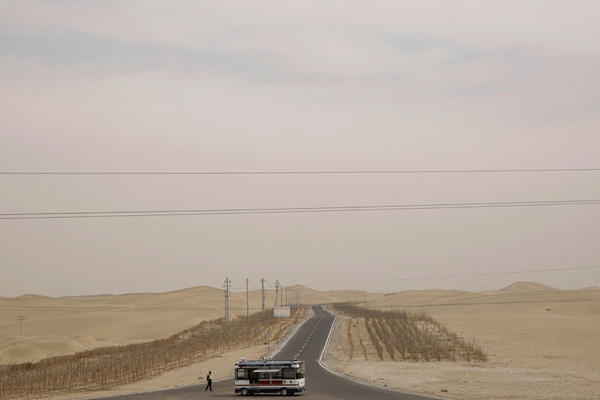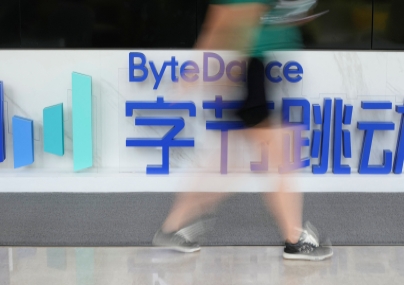
Skip to
The Belt and Road Initiative and its increasing number of infrastructure projects have fueled discussion on public-private partnerships (PPPs), but caution should be exercised when using the new project financing tools.
“A key trend in project finance in China is the widespread promotion of PPPs in the infrastructure sector,” says Wang Jihong, a partner with Zhong Lun Law Firm.
On June 19, the Ministry of Finance, the People's Bank of China and the China Securities Regulatory Commission issued new guidance regulating asset securitization on PPP projects, encouraging project companies to develop asset securitization to optimize financing arrangements.
Official statistics show that 41 PPP asset securitization programs had been submitted to the National Development and Reform Commission (NDRC) by March 2017. Nine PPP asset securitization products have been recommend by the NDRC to the China Securities Regulatory Commission and four of them, worth a total 2.7 billion yuan ($400 million), have been approved and will be issued on the Shanghai Stock Exchange and Shenzhen Stock Exchange. In May, the NDRC recommended a second batch of eight projects.
“If a PPP project conducts asset securitization, it means that it has entered into a high-end stage,” says Wang. “Asset securitization is a good sign for the PPP development in China.”
The way the experts see it is that the curtain is rising for PPP asset securitization, as the country is fostering a favorable environment for PPP projects against the backdrop of neutral and tight liquidity. With asset securitization as an important way of raising funds, PPP projects will attract more private investors to participate.
The new guidance followed policies issued since late last year. In December 2016, the National Development and Reform Commission as well as the China Securities Regulatory Commission issued a notice on Advancing the Work Concerning Asset Securitization for PPP Projects in the Traditional Infrastructure Field, which is dubbed as document No. 2698 by experts.
Infrastructure PPPs in line with China's national development strategy, such as those related to the Belt and Road Initiative, are encouraged to use asset securitization. The Shanghai Stock Exchange has set up a green channel for qualified asset securitization products of quality PPP projects.
“Those recommended projects by the NDRC would then be reviewed by specially-assigned staff at the stock exchange end. Feedback will be issued within five trading days and a listing work group meeting will be conducted within the following three trading days,” says Wang with Zhonglun.
Back to topMANY BENEFITS
There are many benefits of asset securitization as it can help with the mismatch of company capital and liquidize assets.
“Investments in PPP projects are usually over 100 million yuan and some have more than several billion yuan and the investment cycle could be a decade, or even longer. The situation could be that the private investor in a PPP project ends up with a high debt ratio, which would hinder further financing and investment activities or even its normal operations,” says Wang. “With asset securitization, these companies can get back their money in a much shorter term, for example, two years after the program is launched. Thus, private investors’ cash liquidity, a critical financial index, could be significantly boosted.”
Some market observers held that in favor of such encouraging policies, 2017 might see booming development of PPP asset securitization.
“Generally speaking, the latest notice and the No. 2698 document set a tone of encouraging PPP projects doing asset securitization and will definitely bring positive impact; however, the supportive message is more about policy instead of detailed implementation methods,” says Wang, adding that this should not result in an overnight boom.
The lawyer pointed out that the No. 2689 document provides a fast approval scheme. At the same time, it also sets a rather high barrier and follow-up criteria. Besides post-project review, it also looks at the operation of the projects; for example, it requires that the cooperation be without any potential dispute, and the government should pay on time while the private investor should maintain an expected cash liquidity position.
“The concept of PPP projects has been around for not that long, so we see that some approaches are not down to earth, which means it lacks feasibility testing. That is why we sometimes see those policies as difficult to implement,” says Wang.
Huang Zaizai, senior partner with Tianyuan Law Firm, echoes Wang’s thoughts and is cautious about the rapid growth of PPP asset securitization.
“There are brokerage firms coming to us for recommendation of good PPP projects that can do asset securitization,” says Huang. “We find that although the No. 2698 document is sending a message encouraging PPP asset securitization, the requirement is still quite high. For example, a project operating cycle of at least two years is required. However, the PPP concept has only been promoted in China since 2014; most PPP projects are still under preparation or construction.”
The complexity of PPP asset securitization also slows down the pace of its popularization, according to Huang.
“It involves many participants, private investors, financial institutions, governments and so on. It is not that easy to find common ground,” he says.
Back to topVERY COMPLICATED
The system at the government side is very complicated, with layers of authority. In some prefecture-level cities, for example, one veto could postpone the whole project.
“And the most important factor is that the procedure takes quite a long time. If the project turns to banks to get a loan, it probably only takes a couple of days while asset securitization needs at least two or three months," says Huang.
Wang agrees, sharing Zhonglun's experience with local governments in PPP projects.
"By participating in the negotiation, we actually provide education and consultation at the same time. Many authorities only have a rough idea of PPP and have no idea of how to proceed or how to set requirements in advance. It is quite common that we need to prepare a brief or presentation at the beginning of every meeting, which is more like a tutorial on PPP," says Wang.
Both lawyers hold that it makes no sense to make PPP or asset securitization into a kind of movement with all rushing to take part.
"Only projects that are mature and prepared can use this new financing method; otherwise, any failure could result in serious default, causing the local government and companies a haemorrhage or even systematic risk," says Huang.
Both PPP and asset securitization are still new financing methods to most industry players and the government, and thus, the experts suggest that progressing step by step is the best way for Chinese players to utilize the new project financing tools.
“Most investors we see now in PPP fields are actually contractors who are experienced in bidding and construction but are still green in financing. Most of them are still in a transition period, from contractor to project operator. It takes time,” says Wang.
Back to top


